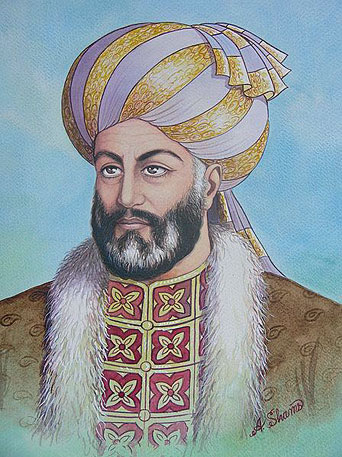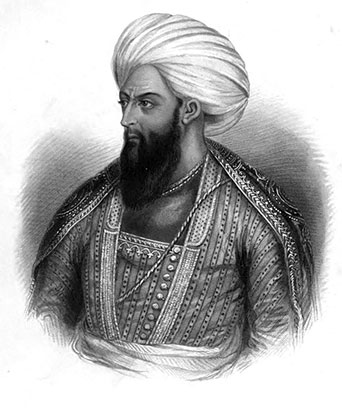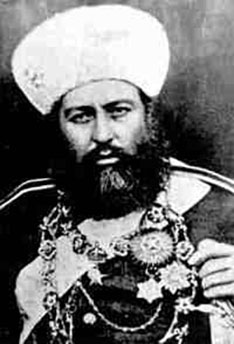History of Afghanistan, A historical timeline of Afghanistan,
History of the Afghans, Afghanistan history wikipedia, Afghanistan history facts
History of Afghanistan, A historical timeline of Afghanistan, History of the Afghans, Afghanistan history wikipedia, Afghanistan history facts
| HISTORICAL BACKGROUND The Pre-Islamic Period: Archaeological evidence indicates that urban civilization began in the region occupied by modern Afghanistan between 3000 and 2000 B.C. The first historical documents date from the early part of the Iranian Achaemenian Dynasty, which controlled the region from 550 B.C. until 331 B.C. Between 330 and 327 B.C., Alexander the Great defeated the Achaemenian emperor Darius III and subdued local resistance in the territory that is now Afghanistan. Alexander’s successors, the Seleucids, continued to infuse the region with Greek cultural influence. Shortly thereafter, the Mauryan Empire of India gained control of southern Afghanistan, bringing with it Buddhism. In the mid-third century B.C., nomadic Kushans established an empire that became a cultural and commercial center. From the end of the Kushan Empire in the third century A.D. until the seventh century, the region was fragmented and under the general protection of the Iranian Sassanian Empire. The Islamic and Mongol Conquests: After defeating the Sassanians at the Battle of Qadisiya in 637, Arab Muslims began a 100-year process of conquering the Afghan tribes and introducing Islam. By the tenth century, the rule of the Arab Abbasid Dynasty and its successor in Central Asia, the Samanid dynasty, had crumbled. The Ghaznavid Dynasty, an offshoot of the Samanids, then became the first great Islamic dynasty to rule in Afghanistan. In 1220 all of Central Asia fell to the Mongol forces of Genghis Khan. Afghanistan remained fragmented until the 1380s, when Timur consolidated and expanded the existing Mongol Empire. Timur’s descendants ruled Afghanistan until the early sixteenth century.  Ahmad Shāh Durrānī (c.1723–1773), the founder of the Durrani Empire and regarded as the founder of present-day Afghanistan. The Pashtun Rulers: In 1504 the region fell under a new empire, the Mughals of northern India, who for the next two centuries contested Afghan territory with the Iranian Safavi Dynasty. With the death of the great Safavi leader Nadir Shah in 1747, indigenous Pashtuns, who became known as the Durrani, began a period of at least nominal rule in Afghanistan that lasted until 1978. The first Durrani ruler, Ahmad Shah, known as the founder of the Afghan nation, united the Pashtun tribes and by 1760 built an empire extending to Delhi and the Arabian Sea. The empire fragmented after Ahmad Shah’s death in 1772, but in 1826 Dost Mohammad, the leader of the Pashtun Muhammadzai tribe, restored order.  Dost Mohammad Khan (1793-1863) was Emir of Afghanistan from 1826–1839 and 1845–1863. He was was the founder of the Barakzai dynasty, the two branches of the Barakzai dynasty Afghanistan from 1826 to 1973 when the monarchy finally ended under Mohammad Zahir Shah. The Great Game: Dost Mohammad ruled at the beginning of the Great Game, a century-long contest for domination of Central Asia and Afghanistan between Russia, which was expanding to the south, and Britain, which was intent on protecting India. During this period, Afghan rulers were able to maintain virtual independence, although some compromises were necessary. In the First Anglo-Afghan War (1839–42), the British deposed Dost Mohammad, but they abandoned their Afghan garrisons in 1842. In the following decades, Russian forces approached the northern border of Afghanistan. In 1878 the British invaded and held most of Afghanistan in the Second Anglo-Afghan War.  Amir Abdur Rahman was Emir of Afghanistan from 1880 to 1901. In 1880 Abdur Rahman, a Durrani, began a 21-year reign that saw the balancing of British and Russian interests, the consolidation of the Afghan tribes, and the reorganization of civil administration into what is considered the modern Afghan state. During this period, the British secured the Durand Line (1893), dividing Afghanistan from British colonial territory to the southeast and sowing the seeds of future tensions over the division of the Pashtun tribes. Abdur Rahman’s son Habibullah (ruled 1901–19) continued his father’s administrative reforms and maintained Afghanistan’s neutrality in World War I. Full Independence and Soviet Occupation: In 1919 Afghanistan signed the Treaty of Rawalpindi, which ended the Third Anglo- Afghan War and marks Afghanistan’s official date of independence. In the interwar period, Afghanistan again was a balancing point between two world powers; Habibullah’s son Amanullah (ruled 1919–29) skillfully manipulated the new British-Soviet rivalry and established relations with major countries. Amanullah introduced his country’s first constitution in 1923. However, resistance to his domestic reform program forced his abdication in 1929. In 1933 Amanullah’s nephew Mohammad Zahir Shah, the last king of Afghanistan, began a 40-year reign. After World War II, in which Afghanistan remained neutral, the long-standing division of the Pashtun tribes caused tension with the neighboring state of Pakistan, founded on the other side of the Durand Line in 1948. In response, Afghanistan shifted its foreign policy toward the Soviet Union. The prime minister ship of the king’s cousin Mohammad Daoud (1953–63) was cautiously reformist, modernizing and centralizing the government while strengthening ties with the Soviet Union. However, in 1963 Zahir Shah dismissed Daoud because his anti-Pakistani policy had damaged Afghanistan’s economy. Mohammad Zahir Shah, the last King (Badshah) of Afghanistan, reigning for four decades, from 1933 until he was ousted by a coup in 1973.A new constitution, ratified in 1964, liberalized somewhat the constitutional monarchy. However, in the ensuing decade economic and political conditions worsened. In 1973 Daoud overthrew the king and established a republic. When economic conditions did not improve and Daoud lost most of his political support, communist factions overthrew him in 1978. In 1979 the threat of tribal insurgency against the communist government triggered an invasion by 80,000 Soviet troops, who then endured a very effective decade- long guerrilla war. Between 1979 and 1989, two Soviet-sponsored regimes failed to defeat the loose federation of mujahideen guerrillas [who were supported by the US, Pakistan, and Saudi Arabia, note from the editor] that opposed the occupation. In 1988 the Soviet Union agreed to create a neutral Afghan state, and the last Soviet troops left Afghanistan in 1989. The agreement ended a war that killed thousands, devastated industry and agriculture, and created 5 to 6 million refugees. Civil War and the Taliban: The 1988 agreement did not settle differences between the government and the mujahideen, and in 1992 Afghanistan descended into a civil war that further ravaged the economy. Among the leaders of the warring factions were Ahmad Shah Massoud, an ethnic Tajik; Gulbuddin Hekmatyar, a Pashtun; and Abdul Rashid Dostum, an Uzbek. Despite several temporary alliances, struggles among the armed groups continued until one Islamic fundamentalist group, the Taliban, gained control of most of the country in 1996. The Taliban used an extremist interpretation of Islam to assert repressive control of society. The economy remained in ruins, and most government services ceased. The Taliban granted the Arab terrorist organization al Qaeda the right to use Afghanistan as a base. As al Qaeda committed a series of international terrorist acts culminating in attacks on the United States on September 11, 2001, the Taliban rejected international pressure to surrender al Qaeda leader Osama bin Laden. When the United States and allies attacked Afghanistan in the fall of 2001, the Taliban government collapsed, but Taliban and al Qaeda leaders escaped. A United States–led International Security Assistance Force began an occupation that is still in place in 2008. Rebuilding the Country: In December 2001, Afghan leaders in exile signed the Bonn Agreement, forming an interim government, the Afghan Interim Administration, under the leadership of the Pashtun moderate Hamid Karzai. In 2002 Karzai was selected president of the Transitional Islamic State of Afghanistan, whose ruling council included disparate leaders of the anti-Taliban Northern Alliance. A new constitution, written by a specially convened Loya Jirga, or constituent assembly of regional leaders, was ratified in early 2004. In October 2004, an overwhelming popular vote elected Karzai president of the Islamic Republic of Afghanistan. However, regional warlords and large areas of Afghanistan remained beyond the control of the Karzai government. Despite substantial international aid, the Afghan government, which included representatives from many factions, was unable to address numerous social and economic problems. The parliamentary elections of September 2005 gave regional warlords substantial power in both houses of the National Assembly, further jeopardizing Karzai’s ability to unite the country. The Bonn Agreement lapsed after the 2005 elections. Determined to end the tragic conflict in Afghanistan and promote national reconciliation, lasting peace, stability and respect for human rights in the countryThe participants in the UN Talks on Afghanistan of the Afghan Bonn Agreement - December 2001 The agreement’s successor, the Afghanistan Compact, went into effect in January 2006 to set goals for international assistance in economic development, security, protection of human rights, and the fight against corruption and drug trafficking through 2010. Hamid Karzai, President of the Islamic Republic of Afghanistan, U.S. President Barack Obama and Pakistani President Asif Ali Zardari at an US-Afghan-Pakistan Trilateral meeting in May 2009. In the meantime, the resurgent Taliban intensified terrorist activities in areas beyond government control, particularly the southeastern provinces. In mid-2006, North Atlantic Treaty Organization (NATO) forces turned back a Taliban offensive aimed at Kandahar. However, beginning in 2007 the Taliban utilized safe havens in adjacent Pakistan to gradually restore and expand its control in Afghanistan. In early 2008, it controlled an estimated 10 percent of the country while the government controlled only an estimated 30 percent. Local tribes controlled the remaining territory. Despite U.S.-aided efforts to reduce cultivation of poppies for narcotics production, in 2007 and 2008 that crop accounted for an increasing percentage of Afghanistan’s economy and was a major support of the Taliban. In mid-2008, a new International Conference in Support of Afghanistan reaffirmed international commitments to the country’s economic and political stability but demanded improved coordination of aid and reduced corruption. Meanwhile, widespread economic hardship increasingly weakened the Karzai government’s support among the population. | ||



0 Comments